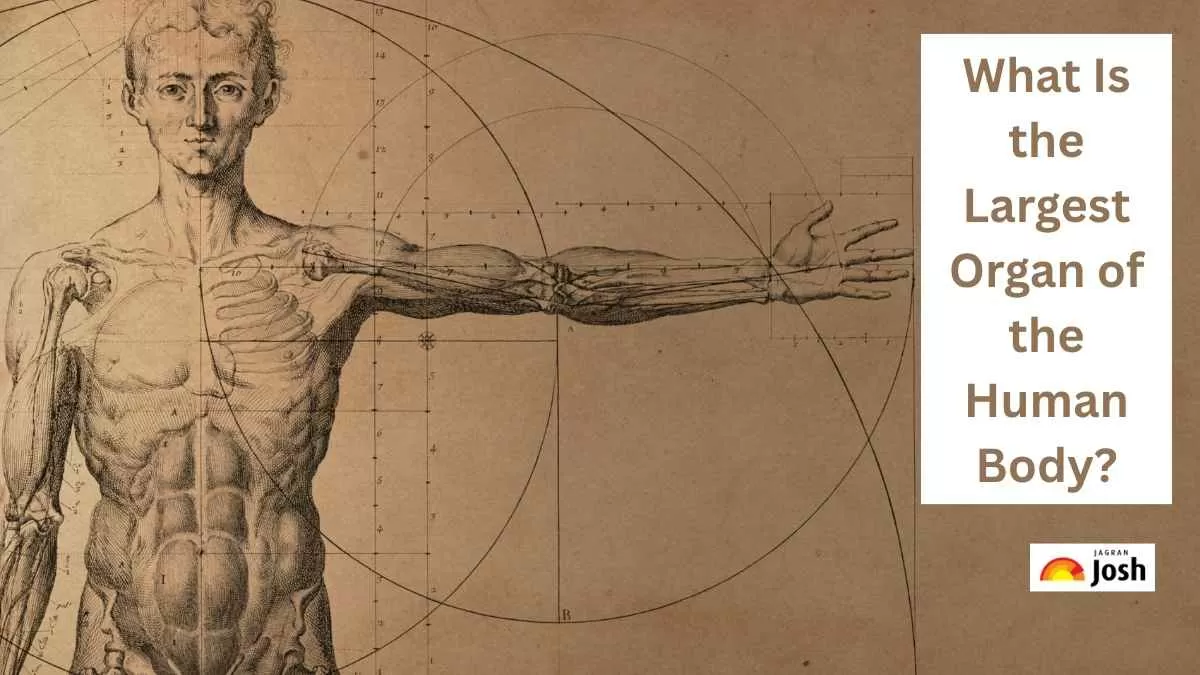Largest Organ of the Human Body: When we picture organs, we tend to think of internal structures like the heart, lungs, or liver. However, the largest organ in the human body is actually external, it’s the skin. Covering your entire body, the skin serves as a crucial barrier between you and the outside world. It’s constantly working to protect, regulate, and communicate with your environment, making it one of the most vital parts of your anatomy. Keep reading for more details about the largest organ of the human body.
Read More: Which is the Largest Lake in India?
What Makes Skin the Largest Organ?
Skin is considered the largest organ due to its surface area and weight. In an average adult, the skin spans about 20 square feet (approximately 2 square meters) and makes up around 15% of total body weight. It consists of three primary layers: the epidermis, dermis, and hypodermis. Each layer plays a distinct role, from the epidermis acting as a protective shield to the dermis housing nerves and blood vessels and the hypodermis storing fat for insulation and energy.
Why Is the Skin So Important?
The skin is more than just a physical covering. It serves as the body’s first line of defence against infection, injury, and harmful UV rays. It helps regulate body temperature through sweating and blood flow, supports vitamin D synthesis when exposed to sunlight, and enables us to sense the world through touch. It also assists in waste removal via sweat glands. These combined functions make it a complex, multifunctional organ essential for survival.
Skin vs. Internal Organs
Although the skin holds the title of the largest organ overall, the liver is the largest internal organ in the body. Weighing around 1.5 kilograms (3.3 pounds), the liver plays a key role in metabolism and detoxification. However, unlike internal organs that are hidden and protected, the skin is in constant contact with the environment and is continuously renewing itself, shedding old cells and generating new ones approximately every 28 days.
Read More: Which is the Largest State in India?
Fun Facts About Human Skin
Constant Renewal
Your skin is in a constant state of renewal. Every 28 to 30 days, your entire outer layer, the epidermis, replaces itself. Dead skin cells are shed and replaced by new ones formed in the deeper layers. That means you essentially get a ‘new skin’ every month.
Shedding Skin Cells
On average, you shed around 30,000 to 40,000 dead skin cells every minute, adding up to about 9 pounds (4 kg) of dead skin every year. Much of the dust in your home is actually made up of these tiny flakes of skin.
Skin Color and Melanin
Skin colour is determined by the type and amount of melanin, a pigment produced by special cells called melanocytes. Everyone has roughly the same number of melanocytes, but how much melanin they produce varies based on genetics and sun exposure. More melanin means darker skin and better natural UV protection.
Sense of Touch
Your skin is home to millions of nerve endings, especially in areas like your fingertips, lips, and tongue. These specialised sensors allow you to detect touch, pressure, temperature, pain, and texture, making skin the body’s largest sensory organ.
Body Temperature Control
Your skin helps regulate body temperature through sweat glands and blood flow. When you’re hot, blood vessels expand and sweat is released to cool the body. When you’re cold, blood vessels constrict to retain heat. It acts like a built-in thermostat.
Waterproof Barrier
Even though skin looks soft and breathable, it’s a highly effective waterproof shield. The outer layer, made up of tightly packed cells and natural oils, prevents excess water loss from the body and blocks harmful substances from getting in.
Read More: Which Is The Oldest Railway Station In The World?
